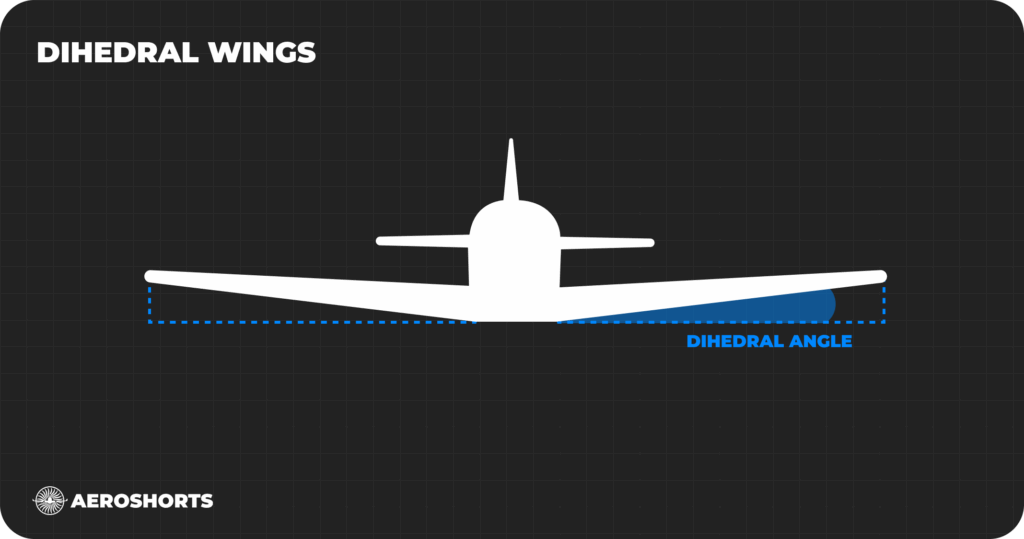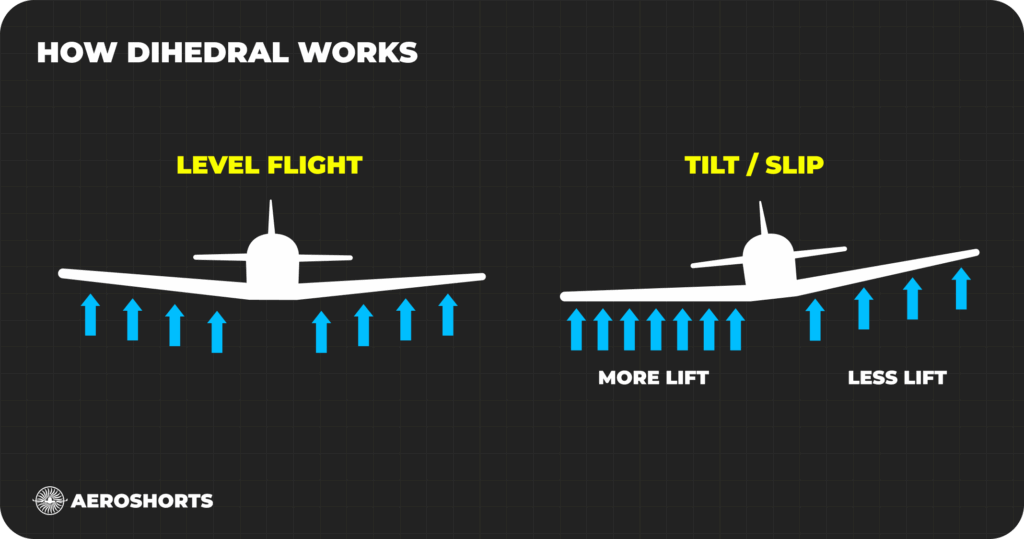What Is Dihedral?
Dihedral is the slight upward angle of an airplane’s wings when viewed from the front. It is a common design feature used to make airplanes more stable in flight. Many small aircraft and commercial planes have dihedral built into their wings.

Why Do Airplanes Need Dihedral?
The main purpose of dihedral is to improve lateral stability. This means the airplane can return to level flight if it gets tilted or pushed to one side by wind or turbulence. Dihedral makes flying smoother and safer.
How Dihedral Works
In straight and level flight, the air hits both wings evenly. Both wings produce the same amount of lift. But if the airplane tilts or slips sideways, the angle of the wind changes.
Now, the lower wing meets the wind at a stronger angle. It creates more lift than the higher wing. This difference in lift pushes the plane back to level flight. That is how dihedral helps the airplane stay stable without pilot input.

Dihedral in Coordinated Turns
Some pilots think dihedral helps in a coordinated turn, but this is not true. In a proper turn where the rudder and ailerons are used together, the airflow over both wings stays the same. Dihedral does not change the lift in a coordinated turn. It only works when the plane slips or is unbalanced.
Dihedral and Different Airplane Designs
High-wing airplanes often have less dihedral than low-wing aircraft. But they still stay stable. Why? Because of something called the pendulum effect. The fuselage (main body of the plane) hangs below the wings. Gravity pulls it back to level when the plane tilts.

What If the Wings Were Flat?
Airplanes with flat wings, like fighter jets or aerobatic planes, have little or no dihedral. These planes are made for fast, controlled flying by experienced pilots. Without dihedral, the airplane does not return to level flight on its own. The pilot has to make more corrections during flight.
Dihedral Keeps Planes Balanced
Dihedral may seem like a small design feature, but it makes a big difference. It helps airplanes stay balanced during side slips and gives them natural stability. Thanks to dihedral, flying is safer and smoother for pilots and passengers.



